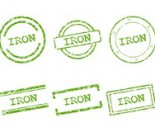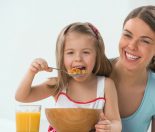This article contains advice and nutritional tips for you to help your sick child back to a full recovery through food and drink.
Children seem to get sick very suddenly and often (hopefully) they bounce back very quickly after a period of illness. But what can you do if your child, or even yourself, is troubled with diarrhoea and /or vomiting.
Dehydration
The main concern with children is their high risk of dehydration through loss of fluids with vomiting or diarrhoea. This is also true for adults, but due to our body size it takes longer for us to become very dehydrated.
Any time that you are concerned about your child and think they may be getting dehydrated, you should act quickly and consult your doctor.
Signs of dehydration:
- Prolonged vomiting / diarrhoea – with no fluid being kept down or very loose bowel motions
- A fever as well as vomiting or diarrhoea (see link below)
- Very low urine output (check for wet nappies in babies)
- Poor skin elasticity – to test for this pinch the skin on the back of the hand and if it stays pinched after you let go this is a sign of dehydration (it should return to its normal flat appearance).
- Sunken eyes and lack of tears
- Rapid or slow breathing
- Restlessness and irritability
- Very dry mouth or tongue
- Young children who are sleepy and floppy
- In young babies check their fontanelle (the soft spot on the top of their head) – it should not be sunken.
Fluids for sick kids
- Initially, the main thing to aim for is to get fluids into your child.
- It is best to encourage small, frequent sips – they will not tolerate a large volume in one go. Including fluids with some energy value is worth trying, if they can tolerate it.
- If your child has been sick for a period of time try an oral re-hydration fluid. These fluids have the right balance of glucose (sugar) and are also an important source of electrolytes (sodium and potassium) which are lost through vomiting and diarrhoea.
Other fluids
- Dilute fruit juice can be a good source of energy initially.
- Using ice blocks (cubes from your freezer or ice blocks on a stick) can be a good source of fluids.
- Jelly is also a good way to get fluids into your sick child.
Introducing food for sick kids
As your child gets better slowly introduce food back into their diet. Try to keep the rough fibrous type foods low initially. Bland foods are also better tolerated than rich foods. It is best to offer things frequently and in small amounts.
Some children will bounce back quickly and may resume a normal diet quite quickly. Others may take some time before they feel comfortable with a range of foods.
Sometimes when you have been sick you can crave the strangest of food choices which may not seem logical to anyone else. If your child is asking for a certain food give it a go – although use your own knowledge and suggest alternatives if you really know it will be hard to tolerate.
If you are struggling with food choices for your child, consider the following suggestions initially. As your child’s tolerance and interest in food returns then move back to a normal diet.
Breads for sick kids
Bread – Use white bread and use only a scraping of butter or margarine. Adding vegemite or marmite is a good way of replacing salt which may have been lost though vomiting or diarrhoea. Dry toast is also a good option.
Crackers – Having something to nibble on fairly constantly can help the return of the appetite. Crackers can be a good food. Look for low fat ones – those labeled 97% fat free would be good.
Fruit & Veges for preschoolers
Fruit –Try bananas or cooked (peeled) stewed fruit such as apples, pears, peaches. Apple puree can be a good way to help control diarrhoea due to the pectin in the fruit.
Vegetables – Initially try boiled / mashed root vegetables which would be easier to tolerate than some of the more fibrous or stronger smelling vegetables such as broccoli. Good choices would be potatoes, kumara, pumpkin, carrots.
Protein choices
Eggs – poached, boiled or scrambled
Fish – steamed
Plain chicken – to help keep it moist serve it with some gravy
Plain, lean roast meat – with or without gravy
Dairy products
Milk is great unless they have had a stomach bug, as dairy can re-aggravate a problem by ‘feeding the bugs’.
If your child is not troubled with diarrhoea, then choices like a yoghurt, ice-cream or custard could be considered.
If your child has had a lot of diarrhoea you may find that dairy products initially upset their bowels, so avoid excess dairy products such as full milk drinks.
Breast feeding babies should still be breast fed.
Bottle fed infants can be given soy milk formula while their gut recovers.
Breakfast cereals & other cereals for sick kids
Choose ones that are not too rough on the digestive system – Rice bubbles, Cornflakes or even a fine porridge (such as creamota)
Plain boiled rice or plain pasta.
At all times take great care with hand washing to prevent the spread of any bugs!
Our Fever article explains what fever is all about and how you can help reduce your child’s temperature. For more information on suitable Fluids for children, click here. For great advice on when to call the Doctor, see our Emergency Check List







Thank you! A great reminder during these cold snaps!